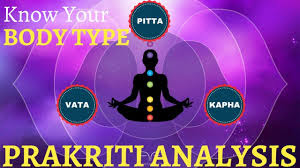Prakriti in Ayurveda
What is Prakriti?
How and when Prakriti is determined?
Understanding the Three Doshas
All individuals have Vata, Pitta, and Kapha the three Doshas in varying degrees. Each Dosha has a specific set of qualities and functions in the body.
The qualities of air and space characterize Vata, and it governs bodily movements such as breathing, circulation, nerve impulses, and digestion.
Fire and water qualities characterize Pitta and is responsible for metabolism, digestion, and transformation in the body.
Water and earth qualities characterize Kapha and is responsible for lubrication, nourishment, and stability in the body.
Characteristics of Each Prakriti
An Ayurvedic practitioner can recommend personalized lifestyle and dietary changes to maintain a healthy balance of the Doshas in your body once they determine your Prakriti. Here are some of the characteristics of each Prakriti:
Vata Prakriti: People with a dominant Vata Dosha are usually slim, energetic, creative, and flexible. When out of balance, they may experience anxiety, restlessness, insomnia, and digestive issues.
Pitta Prakriti: People with a dominant Pitta Dosha are usually of medium build, intelligent, focused, and ambitious. When out of balance, they may experience irritability, inflammation, acidity, and skin rashes.
Kapha Prakriti: People with a dominant Kapha Dosha are usually of heavy build, calm, stable, and nurturing. When out of balance, they may experience lethargy, weight gain, congestion, and depression.
Maintaining a Balanced Prakriti
Maintaining a balanced Prakriti involves making conscious choices about your diet, lifestyle, and environment. Ayurveda recommends following a diet that suits your Dosha type.
This includes practicing regular exercise, taking adequate rest and sleep. Managing your stress, and keeping yourself away from harmful habits such as smoking and alcohol consumption are also important to maintain a balanced Prakriti.
If the doshas become imbalanced due to factors such as diet, lifestyle, or environmental factors, the individual may experience symptoms of illness or disease, which Ayurveda refers to as their vikriti.
Determing your Prakriti
In Ayurveda, there are various ways to identify an individual's Prakriti, or unique constitution. Here are some of the commonly used methods:
1. Prakriti Questionnaire: The Ayurvedic practitioner uses a detailed questionnaire to assess the physical and psychological traits of an individual, which includes body type, appetite, sleep patterns, energy levels, emotional tendencies, etc. Based on the responses, the practitioner can identify the dominant dosha(s).
2. Pulse Diagnosis: Ayurvedic practitioners use pulse diagnosis to assess an individual's Prakriti. One can feel the pulse on three different levels, and the characteristics of the pulse indicate the dominant dosha(s).
3. Physical Examination: Physical examination is done to assess the physical features of an individual, such as body shape, skin type, hair, nails, and eyes. The dominant dosha(s) can be identified based on these features.
4. Observation: The Ayurvedic practitioner may observe an individual's behavior, speech, and body language to determine their dominant dosha(s).
By combining these methods, Ayurvedic practitioners can accurately identify an individual's Prakriti, which helps in developing personalized treatment plans to maintain optimal health and prevent disease.
Conclusion
In conclusion, Prakriti is an essential concept in Ayurveda that helps us understand our unique body constitution and maintain a healthy balance of the three Doshas. By understanding our Prakriti, we can make informed decisions about our diet, lifestyle, and health, and achieve optimal wellness. Consult an Ayurvedic practitioner to determine your Prakriti.








0 Comments